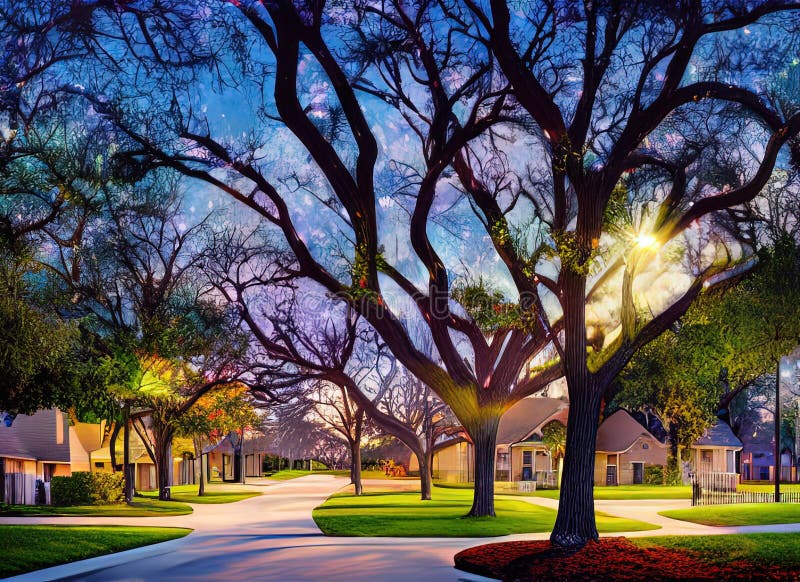The expectations of the future are intrinsically tied to our interactions with the natural world, especially in the vibrant state of Texas. As urban sprawl presses on, the connection between nature and neighborhood becomes an increasingly pertinent topic of discussion. In the wake of rapid development, it is essential to explore how nature interlaces itself with our daily lives, even in the most unexpected corners of our cities. This journey will reveal the profound encounters that define Texas neighborhoods, painting a picture of flourishing biodiversity amidst concrete. From the delicate flutter of butterfly wings to the rustle of oak leaves in a stiff breeze, these natural encounters are not merely fleeting moments; they evoke an enduring sense of wonder and responsibility.
In cities such as Dallas, greenery often adorns the urban landscape, creating oases that allure both residents and wildlife. Take, for instance, the Boundbrook Oaks Estates neighborhood, nestled in the heart of this bustling metropolis. Here, aesthetic façades of homes are complemented by verdant lawns and community parks, inviting flora and fauna to thrive. The unexpected encounters with nature in such an environment can enrich residents’ lives, offering a sanctuary that contrasts sharply with the chaotic nature of urbanization. Imagine waking up to the melodious serenade of songbirds or witnessing a curious squirrel darting across yards; these interactions foster a connection to the ecosystem that surrounds us.
One cannot overlook the significance of local parks as vital green spaces fostering interactions between the populace and nature. In Texas, municipal and state parks are bastions of biodiversity, providing habitats for various species. Think of parks like the expansive White Rock Lake Park in Dallas, where the harmony between humans and wildlife is palpable. As you traverse the well-kept trails, the soft shadows of towering trees envelop you, lending a respite from the sizzling Texas sun. Fishermen often cast their lines into the shimmering waters, while families frolic along the shoreline, all under the watchful gaze of herons preening in the shallows. The juxtaposition of leisure and wildlife creates an environment where people come to reflect, unwind, and mingle with the flora and fauna that share their community.
Moreover, Texas neighborhoods can be a canvas for citizen-driven initiatives that underscore the importance of ecological awareness. Initiatives aimed at preserving native plant life, creating pollinator gardens, and promoting sustainable landscaping practices are becoming increasingly popular. This grassroots movement cultivates a profound appreciation for the natural world while enhancing local biodiversity. Through these efforts, neighborhoods transform into havens for butterflies, hummingbirds, and beneficial insects, rendering them essential allies in the crusade against declining pollinator populations.
However, the endeavor does not stop at mere aesthetic enhancement. Incorporating nature into urban planning has far-reaching implications for mental well-being and community health. Studies have consistently shown that the presence of green spaces can reduce stress, boost mood, and foster community ties. As individuals congregate in shared natural environments—be it a neighborhood park, a community garden, or even a lush greenbelt—these encounters can facilitate social interactions that strengthen the community fabric. Nature has an unparalleled ability to transcend individual differences, acting as a unifying force amid diversity.
Furthermore, encounters with nature extend beyond flora and fauna; they encompass the connection to the larger landscape and historical narratives woven into Texas’s tapestry. For instance, the oak trees that stand sentinel in many neighborhoods are not merely trees; they are witnesses to centuries of history. These steadfast giants provide shaded comforts and serve as reminders of the resilience and adaptability synonymous with Texas itself. Their branches cradle various bird species, and their roots anchor the soil, forming an essential link in the ecological chain.
As we contemplate the expectations of the future, one area deserving attention is the preservation of these natural encounters in our neighborhoods. Urban developments must be thoughtfully designed with an emphasis on sustainability, prompting developers to strike a balance between progress and preservation. Advocates for green infrastructure champion ideas that integrate parks, green roofs, and wildlife corridors within cityscapes, providing space for nature to flourish amid the urban din. Such initiatives ensure that future generations will continue to enjoy nature in their neighborhoods, fostering empathy for all living beings and an enduring commitment to environmental stewardship.
In conclusion, nature in your neighborhood can manifest in captivating ways that profoundly influence the lives of Texas residents. As urban environments evolve, so too must our appreciation for local biodiversity and ecological integrity. Each encounter with nature—be it a casual stroll through a park, an examination of a carefully nurtured garden, or a moment spent observing local wildlife—offers a glimpse into the intricate web of life that interconnects all inhabitants of the region. The expectations of the future hinge upon our collective ability to nurture these connections, ensuring that the interplay between nature and neighborhood endures, enriching our lives and the environment for years to come. Nature is not just a backdrop; it is an integral character in the narrative of our communities.









Leave a Comment